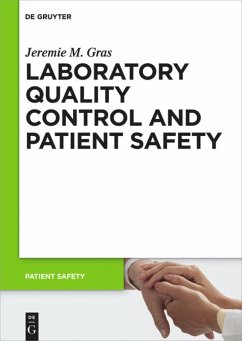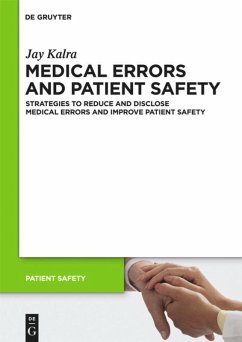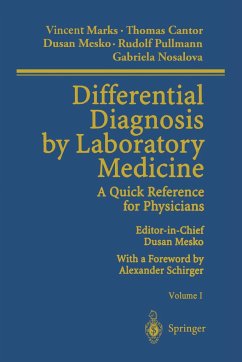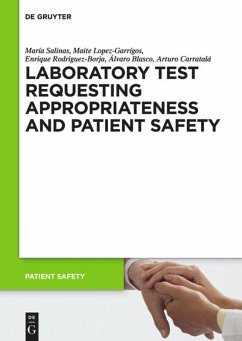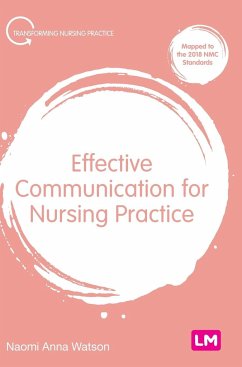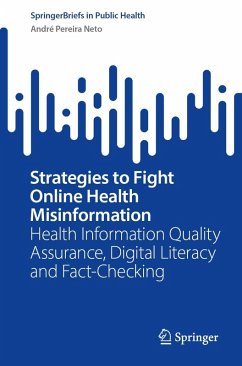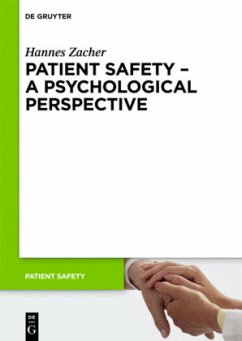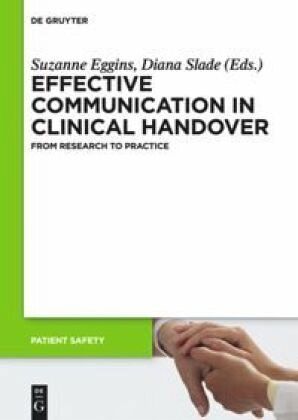
Effective Communication in Clinical Handover
From Research to Practice
Herausgegeben: Eggins, Suzanne; Slade, Diana; Geddes, Fiona
Versandkostenfrei!
Versandfertig in 1-2 Wochen
25,99 €
inkl. MwSt.

PAYBACK Punkte
13 °P sammeln!
Based on detailed multi-disciplinary analyses of more than 800 recorded handover interactions, audits of written handover documentation, interviews and survey responses, the contributing authors identify features of effective and ineffective clinical handovers in diverse hospital contexts. The authors then translate their descriptive findings into practical protocols, communication strategies and checklists that clinicians, managers and policy makers can apply to improve the safety and quality of clinical handovers. All the contributors are affiliated with the International Research Centre for...
Based on detailed multi-disciplinary analyses of more than 800 recorded handover interactions, audits of written handover documentation, interviews and survey responses, the contributing authors identify features of effective and ineffective clinical handovers in diverse hospital contexts. The authors then translate their descriptive findings into practical protocols, communication strategies and checklists that clinicians, managers and policy makers can apply to improve the safety and quality of clinical handovers. All the contributors are affiliated with the International Research Centre for Communication in Healthcare (IRCCH), an international multidisciplinary organisation of over 90 healthcare professionals from more than 17 countries committed to improving improving communication in healthcare systems around the world.
'The authors have created a new and tightly woven systems safety net that will, if implemented, significantly reduce the occurrence of errors resulting from cumulative communication failures.' -H. Esterbrook Longmaid III, MD, FACR, President of Medical Staff, Beth Israel Deaconess-Milton Hospital, Milton, MA USA
'Uncommonly valuable for the rigorous, original communication research it reports and for the careful translation of the research findings into practical strategies that actually improve clinical handovers in the real world of practice.' -Professor Suzanne Kurtz, Washington State University
'This clear, plain English book is an outstanding resource for the training of all involved in healthcare.' -Elizabeth Trickett, (Former) Director of Safety and Quality, ACT Health, Australia
'The authors have created a new and tightly woven systems safety net that will, if implemented, significantly reduce the occurrence of errors resulting from cumulative communication failures.' -H. Esterbrook Longmaid III, MD, FACR, President of Medical Staff, Beth Israel Deaconess-Milton Hospital, Milton, MA USA
'Uncommonly valuable for the rigorous, original communication research it reports and for the careful translation of the research findings into practical strategies that actually improve clinical handovers in the real world of practice.' -Professor Suzanne Kurtz, Washington State University
'This clear, plain English book is an outstanding resource for the training of all involved in healthcare.' -Elizabeth Trickett, (Former) Director of Safety and Quality, ACT Health, Australia



